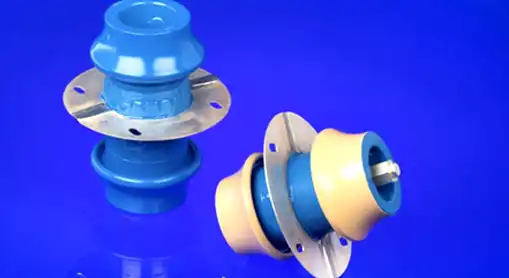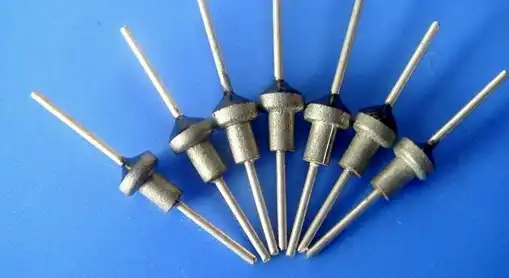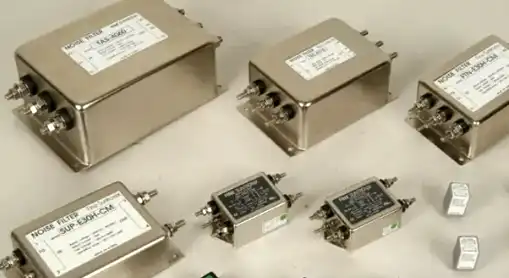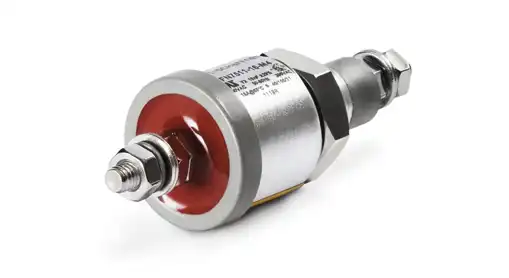Feed through capacitors are crucial in modern electronic systems, ensuring signal integrity and reliability. Understanding their function and applications is essential for engineers and enthusiasts alike.
What is a Feed Through Capacitor?
A Feed Through Capacitor is an electronic component designed to filter and suppress electromagnetic interference (EMI) noise in electronic circuits.
It essentially acts as a barrier, allowing desired signals to pass through while blocking unwanted noise or interference. This helps ensure cleaner signals and improved performance in various electronic devices and systems.
Importance of Feed Through Capacitors

Feed through capacitors play a crucial role in electronic circuits, especially in high-frequency applications and environments where electromagnetic interference (EMI) is a concern. These capacitors are designed to provide a pathway for electrical signals while blocking unwanted high-frequency noise and interference.
Here are some key reasons for the importance of feed through capacitors:
EMI Suppression: Feed through capacitors act as effective filters against electromagnetic interference, preventing it from entering or exiting the circuit through power or signal lines. This helps in maintaining signal integrity and reducing the risk of data corruption or equipment malfunction.
Signal Integrity: In high-frequency circuits, maintaining signal integrity is vital. Feed through capacitors help in preventing signal distortion by providing a low-impedance path for high-frequency signals while blocking noise and interference.
Noise Reduction: Electronic circuits can be susceptible to noise from various sources such as power lines, switching circuits, or nearby electronic devices. Feed-through capacitors shunt high-frequency noise to ground, reducing its impact on sensitive components and improving overall system performance.
Transient Protection: These capacitors can also provide protection against voltage spikes and transients by diverting excessive energy away from sensitive components. This helps in preventing damage to electronic devices and ensures reliable operation under varying environmental conditions.
Compact Design: Feed through capacitors are often compact in size, making them suitable for integration into densely packed electronic assemblies or modules. Their small footprint allows for efficient use of space while still providing effective EMI suppression and noise filtering.
Feed through capacitors are essential components in modern electronic systems, contributing to improved performance, reliability, and compliance with electromagnetic compatibility (EMC) standards.
Feed Through Capacitor Basics
Feed through capacitors, also known as feed through filters or feed through suppression capacitors, are specialized components designed to provide effective filtering of high-frequency signals and suppression of electromagnetic interference (EMI) in electronic circuits.
Here’s a deeper dive into the basics of feed through capacitors:
Construction: Feed through capacitors typically consist of a ceramic or other dielectric material sandwiched between two metal plates. The metal plates serve as the capacitor electrodes, while the dielectric material provides insulation between them. The assembly is usually enclosed in a metal or ceramic housing with terminals for connection to the circuit.
Functionality: The primary function of a feed through capacitor is to allow desired electrical signals to pass through while blocking or attenuating unwanted high-frequency noise and interference. The capacitor acts as a low-pass filter, shunting high-frequency signals to ground while allowing low-frequency signals to pass through relatively unimpeded.
Capacitance Value: The capacitance value of a feed through capacitor determines its effectiveness in filtering high-frequency noise. Capacitance values typically range from a few picofarads to several nanofarads, depending on the specific application requirements. Higher capacitance values provide better filtering performance at lower frequencies.
Impedance Characteristics: Feed through capacitors exhibit impedance characteristics that vary with frequency. At low frequencies, their impedance is relatively high, allowing them to pass low-frequency signals with minimal attenuation. However, at high frequencies, their impedance decreases significantly, effectively shorting high-frequency noise to ground.
Mounting Options: Feed through capacitors can be mounted directly onto a printed circuit board (PCB) or integrated into specialized connectors or feed through filters. PCB-mounted feed through capacitors typically feature solderable terminals for easy installation, while connector-mounted options provide convenient filtering solutions for input/output interfaces.
Applications: Feed through capacitors find widespread use in electronic circuits where EMI suppression and noise filtering are critical, such as in telecommunications equipment, computer peripherals, power supplies, and automotive electronics. They are especially beneficial in high-speed digital circuits, RF communication systems, and sensitive analog circuits.
Compliance and Standards: Manufacturers of electronic devices often need to ensure compliance with electromagnetic compatibility (EMC) standards to meet regulatory requirements and ensure proper functioning of their products in various environments. Feed through capacitors play a vital role in achieving EMC compliance by reducing EMI emissions and susceptibility to external interference.
Feed through capacitors are essential components for maintaining signal integrity, minimizing EMI-related issues, and enhancing the performance and reliability of electronic systems in today’s increasingly noise-prone environments.
Applications of Feed Through Capacitors

Feed through capacitors find a wide range of applications across various industries and electronic systems where effective filtering of high-frequency noise and suppression of electromagnetic interference (EMI) are essential.
Here are some common applications:
Telecommunications Equipment: Feed through capacitors are used in telecommunications infrastructure, including base stations, antennas, and communication satellites, to mitigate EMI and ensure reliable signal transmission and reception.
Computer and Networking Equipment: In computers, routers, switches, and other networking devices, feed through capacitors help reduce electromagnetic interference, improving the performance and reliability of data transmission and processing.
Consumer Electronics: Feed through capacitors are integrated into consumer electronics such as smartphones, tablets, and TVs to suppress EMI generated by internal circuitry and external sources, ensuring optimal device operation and compliance with regulatory standards.
Medical Devices: Medical equipment and devices, including MRI machines, patient monitors, and implantable devices, utilize feed through capacitors to minimize EMI-induced interference, safeguarding sensitive electronic components and ensuring patient safety.
Automotive Electronics: Feed through capacitors are employed in automotive electronic systems, including engine control units (ECUs), infotainment systems, and advanced driver-assistance systems (ADAS), to suppress EMI and maintain reliable operation in the presence of electromagnetic noise from the vehicle’s electrical systems and external sources.
Aerospace and Defense: In aerospace and defense applications, feed through capacitors are used in avionics systems, radar systems, communication equipment, and electronic warfare systems to enhance electromagnetic compatibility (EMC) and withstand harsh electromagnetic environments encountered in aircraft, spacecraft, and military platforms.
Industrial Control Systems: Industrial automation and control systems utilize feed through capacitors to minimize EMI interference, ensuring the reliable operation of machinery, sensors, actuators, and other critical components in manufacturing, process control, and energy distribution systems.
RF and Microwave Circuits: Feed through capacitors play a crucial role in RF (radio frequency) and microwave circuits, including amplifiers, filters, oscillators, and transceivers, where they help maintain signal integrity, reduce noise, and improve the overall performance of wireless communication systems.
Power Supplies and Converters: Feed through capacitors are integrated into power supply units, converters, and inverters to filter out high-frequency noise generated by switching circuits, improving the stability and efficiency of power delivery in electronic devices and industrial equipment.
Feed through capacitors are indispensable components in modern electronic systems, ensuring electromagnetic compatibility, minimizing EMI-related issues, and enhancing the performance, reliability, and safety of a wide range of electronic devices and applications.
Choosing the Right Feed Through Capacitor

Selecting the appropriate feed through capacitor is essential for optimal performance.
Factors to Consider
When choosing a feed through capacitor, factors such as capacitance ratings, temperature stability, and voltage rating must be taken into account to meet the specific requirements of the application.
Capacitance Ratings
The capacitance rating determines the amount of charge a capacitor can store and its effectiveness in filtering out unwanted noise.
Temperature Stability
Feed through capacitors should maintain consistent performance across a wide temperature range to ensure reliability in various operating conditions.
Voltage Rating
The voltage rating of a feed through capacitor indicates the maximum voltage it can handle without breakdown, ensuring safe and reliable operation.
Feed Through Capacitor Installation Tips

Installing feed through capacitors correctly is crucial to ensure their optimal performance in filtering high-frequency noise and suppressing electromagnetic interference (EMI).
Here are some installation tips to consider:
- Select the Right Capacitor: Choose feed through capacitors with appropriate capacitance values and voltage ratings to meet the requirements of your specific application. Consider factors such as frequency range, impedance characteristics, and mounting options.
- Proper Placement: Install feed through capacitors as close to the source of noise or interference as possible. This helps minimize the length of the signal path and ensures effective filtering of high-frequency noise before it can propagate further into the circuit.
- Grounding: Ensure proper grounding of feed through capacitors to provide a low-impedance path for the shunting of high-frequency noise to ground. Connect the capacitor’s ground terminal securely to the ground plane or chassis of the electronic system to maximize its effectiveness in EMI suppression.
- Avoiding Signal Crosstalk: Pay attention to the placement of feed through capacitors to minimize the risk of signal crosstalk or interference between adjacent traces or components on the circuit board. Maintain sufficient spacing between capacitors and other conductive elements to reduce coupling effects.
- Avoid Mechanical Stress: Handle feed through capacitors with care during installation to avoid mechanical stress or damage to the component. Avoid over-tightening mounting screws or applying excessive pressure that could crack the ceramic or compromise the integrity of the capacitor.
- Temperature Considerations: Take into account the operating temperature range of the feed through capacitors and ensure that the installation environment remains within specified temperature limits to prevent thermal stress or performance degradation over time.
- Secure Mounting: Use appropriate mounting techniques to secure feed through capacitors to the circuit board or enclosure. Follow manufacturer recommendations for soldering, adhesive bonding, or mechanical fastening to ensure reliable and durable installation.
- Compliance with Standards: If your application requires compliance with electromagnetic compatibility (EMC) standards or regulations, ensure that feed through capacitors are installed in accordance with relevant guidelines and specifications to meet required performance criteria and certification requirements.
- Testing and Verification: After installation, conduct thorough testing and verification of the electronic system to ensure that feed through capacitors are functioning as intended and providing the desired level of EMI suppression. Use appropriate test equipment to measure noise levels, signal integrity, and compliance with performance specifications.
By following these installation tips, you can ensure the effective integration and performance of feed through capacitors in your electronic systems, enhancing their reliability and minimizing electromagnetic interference issues.
Feed Through Capacitor FAQs
What are the benefits of using feed through capacitors?
Feed through capacitors offer superior noise suppression, ensuring cleaner signals and improved system performance.
How do feed through capacitors differ from other types?
Unlike standard capacitors, feed through capacitors feature a unique design optimized for EMI suppression, making them more effective in noise-sensitive applications.
Can feed through capacitors improve signal integrity?
Yes, feed through capacitors act as effective low-pass filters, attenuating EMI noise and enhancing signal integrity in electronic circuits.
Are feed through capacitors suitable for high-frequency applications?
Absolutely, feed through capacitors are specifically designed to operate at high frequencies, making them ideal for applications where noise suppression is critical.
What are some common mistakes to avoid when installing feed through capacitors?
Common mistakes include improper placement, inadequate soldering, and overlooking signal routing, which can lead to subpar performance and reliability issues.
How can I test the performance of a feed through capacitor?
Performance can be evaluated by measuring signal integrity before and after installing the capacitor, ensuring that noise levels are effectively reduced without compromising signal quality.
Conclusion
Feed through capacitors are indispensable components in modern electronic systems, ensuring reliable operation and signal integrity across various industries. By understanding their function, applications, and installation best practices, engineers can harness the full potential of these essential devices.